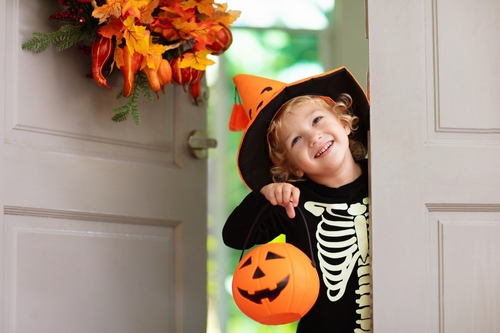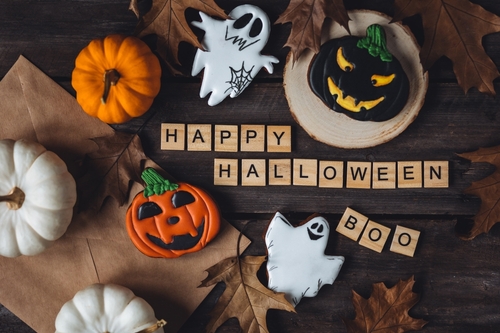Halloween brings communities together each October with costumes, candy, and centuries-old traditions. This beloved holiday combines ancient Celtic practices with modern American customs, creating celebrations that span across cultures and generations. Understanding Halloween’s rich history helps explain why we carve pumpkins, dress in costumes, and go trick-or-treating. These traditions connect us to our ancestors while creating new memories with family and friends.
Whether you’re planning your first Halloween celebration or curious about the holiday’s origins, this guide covers everything you need to know about Halloween traditions and how they evolved into the festivities we know today.
The Ancient Roots of Halloween
Halloween traces back over 2,000 years to the ancient Celtic festival of Samhain (pronounced “sow-in”). The Celts lived in areas that are now Ireland, the United Kingdom, and northern France. They celebrated their new year on November 1st, marking the end of summer and harvest season.
The night before their new year, October 31st, the Celts believed the boundary between the living and dead became blurred. They thought that on this night, the ghosts of the dead returned to earth. This belief formed the foundation for many Halloween traditions we still practice today.
Celtic priests, called Druids, built sacred bonfires where people gathered to burn crops and animals as sacrifices to their deities. During these celebrations, the Celts wore costumes made of animal heads and skins to disguise themselves from roaming spirits.
How Halloween Came to America
Irish immigrants brought Halloween traditions to America during the 1840s potato famine. However, the holiday didn’t become widely celebrated until the late 1800s and early 1900s.
American communities adapted these Irish customs, focusing less on ghosts and religious aspects and more on community gatherings and festivities. By the 1920s and 1930s, Halloween had become a secular, community-centered holiday focused on activities for young people.
The practice of trick-or-treating became popular during this time. Young people would dress in costumes and ask for money or food from neighbors. This evolved into the candy-focused tradition we know today.

Classic Halloween Traditions
Jack-o’-Lantern Carving
The jack-o’-lantern tradition began in Ireland with turnips and potatoes. Irish folklore tells of “Stingy Jack,” a man who trapped the Devil and was denied entry to both heaven and hell. He was condemned to wander with only a hollow turnip with burning coal inside for light.
Irish immigrants brought this tradition to America, where they discovered pumpkins were much easier to carve than turnips. The practice of carving pumpkins became deeply rooted in American Halloween celebrations.
Costume Wearing
Dressing in costumes connects directly to ancient Celtic practices. The Celts wore animal skins and heads to avoid being recognized by ghosts. Over time, this evolved into wearing frightening costumes to scare away spirits.
Modern costume traditions expanded beyond scary themes to include popular culture characters, professions, and creative concepts. This shift made Halloween accessible to people of all ages and comfort levels with spooky themes.
Trick-or-Treating
Trick-or-treating combines several historical practices. The Celtic tradition of leaving food for spirits, the medieval practice of “souling” (going door-to-door for soul cakes), and the Scottish custom of “guising” (performing for treats) all contributed to modern trick-or-treating.
During the Great Depression, communities promoted trick-or-treating as an organized, community-centered activity. This helped reduce Halloween pranks while creating positive neighborhood interactions.
Halloween Celebrations Around the World
Ireland and Scotland
These countries maintain strong connections to Halloween’s origins. Traditional activities include apple bobbing, fortune-telling games, and lighting bonfires. Children go “guising,” performing songs, poems, or jokes for treats.
Mexico – Día de los Muertos
While celebrated around the same time, Día de los Muertos (Day of the Dead) has distinct Mexican indigenous roots. Families honor deceased loved ones with altars, special foods, and cemetery visits. This celebration focuses on remembering and celebrating life rather than fearing death.
England
Guy Fawkes Night on November 5th often overshadows Halloween in England. However, Halloween celebrations are growing, especially among younger generations influenced by American culture.
Canada
Canadian Halloween traditions closely mirror American practices. The holiday gained popularity throughout the 20th century and now features widespread trick-or-treating, costume parties, and decorated homes.
Modern Halloween Traditions
Haunted Houses and Horror Entertainment
Commercial haunted attractions became popular in the 1960s and 1970s. These experiences range from family-friendly spook houses to intense horror experiences for adults. They provide controlled scary experiences that bring communities together.
Halloween Parties
Adult Halloween parties became mainstream in the 1970s and 1980s. These celebrations often feature costume contests, themed decorations, and Halloween-specific foods and drinks. They allow adults to participate in the creative and playful aspects of the holiday.
Home Decorating
Decorating homes for Halloween expanded significantly in recent decades. Many families now invest considerable time and money creating elaborate displays with lights, animatronics, and themed decorations that transform their properties into Halloween spectacles.
Halloween Food Traditions
Candy and Sweet Treats
The association between Halloween and candy strengthened after World War II when sugar rationing ended. Candy companies began marketing specifically for Halloween, creating the billion-dollar industry we know today.
Traditional Halloween treats include candy apples, which date back to the 1950s, and pumpkin-flavored foods that celebrate the harvest season.
Traditional Halloween Foods
Apple-based treats connect to ancient harvest celebrations and divination practices. Bobbing for apples was originally a fortune-telling game used to predict romantic futures.
Soul cakes, small round cakes given to “soulers” during medieval times, represent an early form of Halloween treats. Modern versions include sugar cookies shaped like Halloween symbols.
Creating Your Own Halloween Traditions
Family-Friendly Activities
Consider starting annual traditions like pumpkin carving contests, Halloween movie nights, or neighborhood decoration tours. These activities create lasting memories while honoring the community spirit of Halloween.
Cultural Adaptations
Families can adapt Halloween traditions to fit their cultural backgrounds or personal values. Some focus on harvest celebrations, while others emphasize creative costume-making or charitable activities.
Safety and Inclusion
Modern Halloween celebrations prioritize safety through organized trick-or-treating hours, well-lit neighborhoods, and community events. Many communities also work to make Halloween inclusive for children with food allergies or disabilities.
Frequently Asked Questions About Halloween Traditions
Why do we say “trick-or-treat”?
The phrase “trick-or-treat” comes from the idea that if treats aren’t given, tricks (pranks) might be played. This playful threat became a standard greeting during Halloween festivities in America during the 1930s and 1940s.
What’s the significance of Halloween colors?
Orange represents autumn, harvest, and pumpkins, while black symbolizes death, darkness, and the supernatural. These colors became associated with Halloween through its connection to harvest festivals and supernatural beliefs.
Why do we bob for apples?
Apple bobbing originated as a Celtic divination ritual called “snap apple.” Young people would try to bite apples floating in water or hanging from strings to predict their romantic future. The tradition evolved into a fun party game.
When did Halloween become popular in America?
Halloween gained popularity in America during the late 1800s and early 1900s, largely due to Irish immigration. It became a mainstream, nationwide celebration by the 1950s, focusing on community activities and children’s entertainment.
Are Halloween traditions religious?
Modern Halloween is primarily a secular holiday focused on fun and community. While it has ancient spiritual roots in Celtic and Christian traditions, contemporary celebrations emphasize costumes, candy, and entertainment rather than religious observance.
Keep Halloween Traditions Alive
Halloween traditions connect us to centuries of human celebration, creativity, and community building. These customs have survived because they bring people together, encourage imagination, and create shared experiences across generations.
Whether you participate in traditional trick-or-treating, host elaborate parties, or simply enjoy the seasonal decorations, you’re part of a rich cultural tradition that spans continents and centuries.
Consider how you can contribute to Halloween’s ongoing evolution. Start new family traditions, support community events, or learn more about the cultural significance of this fascinating holiday. Halloween’s greatest tradition is its ability to adapt while maintaining its core spirit of fun, creativity, and community connection.
